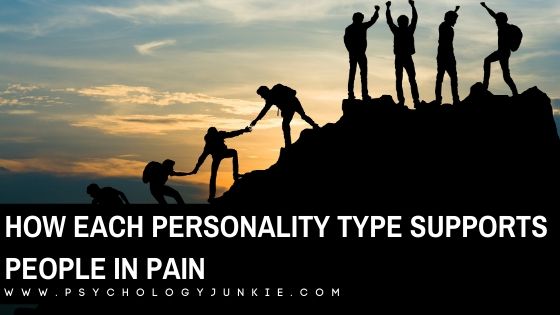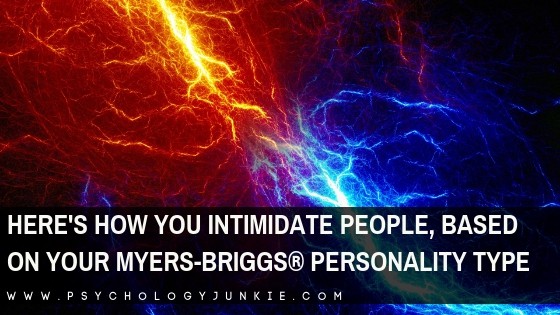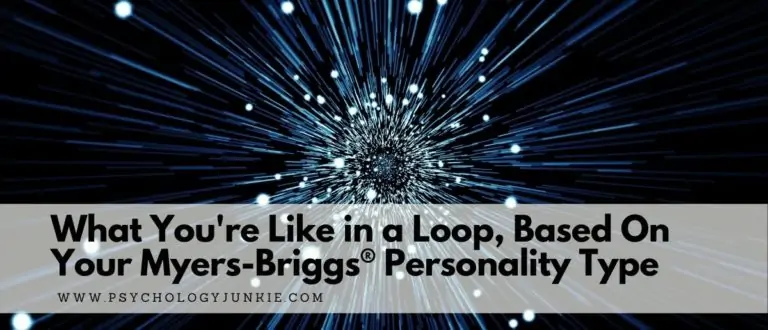The Four Personality Types ISTPs Clash with Most (and How to Connect)
Realistic and free-spirited, ISTPs have a certain coolness factor that (I think) sets them apart. If you look at movie action heroes, most of them are ISTPs (John Wick, Han Solo, and Black Widow, just to name a few). I call them “The Vigilantes” because they’re independent, action-oriented, and clever in a crisis. They like to figure things out, be challenged, compete, and travel their own path. But what happens when someone comes along with big, abstract ideas or a lot of feelings? Well, that’s when the sparks start to fly.
One of the questions that gets asked a lot is “Who do ISTPs not get along with?” And according to our survey of over 80,000 people, the types they clash with the most are ENFPs, ESTJs, ENFJs, and INFPs. These clashes aren’t about “bad” or “good” types—they’re about different priorities and ways of seeing the world. If you’re an ISTP wondering why your ENFP friend always seems to be three steps ahead (or behind) you, or an INFP scratching your head over why your ISTP sibling just doesn’t get your emotional world, this article is here to help.

Over the years, I’ve seen ISTPs struggle to connect with certain personality types—not because they’re unfriendly (most ISTPs are pretty laid-back) but because they approach life in completely different ways. They’re all about logic and practicality, and when someone starts talking in metaphors or asking them to share their deepest feelings, they might accidentally roll their eyes before they can stop themselves.
We’ll unpack why these clashes happen, share real-life examples, and explore how these opposites can learn to work together. Let’s get started!
Not sure what your personality type is? Take our personality questionnaire here. Or you can take the official MBTI® here.
The Four Personality Types ISTPs Clash with Most (and How to Connect)
#1 ENFPs and ISTPs
More than any other type, ISTPs mentioned clashing with ENFPs the most. ENFPs are the idea generators of the personality world. I call them “The Visionaries” because their minds are always buzzing with possibilities, connections, and wild “what ifs.” For the grounded, no-nonsense ISTP, this can feel… exhausting. Or like trying to keep up with someone who’s constantly switching the channel.
Here’s the issue: ISTPs live in the world of what is, while ENFPs exist in the world of what could be. ISTPs are focused on facts, actions, and practical solutions. ENFPs? They’re imagining alternate realities, brainstorming, or trying to have a deep philosophical discussion about life’s meaning. To an ISTP, this can feel like the ENFP is floating off into space while they’re still trying to fix the plane.
One ISTP client told me, “My ENFP friend is always coming up with these huge ideas, but half the time they make no sense. I’ll point out a problem, and they act like I’ve just ruined their entire day.” Meanwhile, an ENFP once said to me, “I feel like my ISTP friend simply can’t imagine beyond what’s right in front of him.”
The truth is that both types have imagination and both types have a sense of logic; but they’re wired very differently.
For ISTPs, imagination shows up in hands-on projects and tasks. They might think of a new way to build their own computer, garden, or motorbike across the states.
For the ENFP, imagination stretches out in all different directions. They may consider life on other planets, the next road trip they want to pursue, the meaning of true love, or ‘what if’ questions that have no end!
And when it comes to logic, ISTPs want to have a comprehensive and thorough understanding of how things work. They’re also skeptics who easily spot logical inconsistencies or fallacies and point them out. This means that if an idea lacks logic in one out of three points, chances are, they’re going to say something about it. This can feel like a blow to the ENFP who ‘dreams out loud’ and brainstorms idea as a source of inspiration and energy. The more ENFPs can brainstorm and generate ideas, the more they can refine them, but if someone’s ticking off flaws in logic along the way it can feel like a slap in the face. They may feel like they can’t even get started because someone is always breaking down their ideas mid-stream.
In the same way, ENFPs may act dismissive of the ISTP’s logic, seeing it as mean-spirited, argumentative, or unfeeling. The ISTP, trying to help, might point out an error or a different way of doing something, and the ENFP might get offended rather than seeing the advice in the helpful way it was intended.
In short, it’s easy for both types to act dismissive of each other’s dominant functions. ISTPs may see Extraverted Intuition as flighty, unrealistic, or unfocused. ENFPs might see Introverted Thinking as pedantic, nitpicky, or overly critical.
Another source of tension is their helping styles. ENFPs use Introverted Feeling (Fi) to encourage people to be true to their values and emotions. ISTPs, however, have Fi in the shadow side of their personality, making emotional conversations overwhelming and confusing. On the flip side, ISTPs try to help with Extraverted Sensing (Se), focusing on tangible actions and in-the-moment problem-solving. ENFPs might see this as “missing the point” when they’re looking for emotional support.
How ENFPs and ISTPs Can Connect
Despite their differences, ISTPs and ENFPs can complement each other beautifully when they focus on their strengths. They both have a sense of adventure and fun, and they’re both gifted with wit and humor. I’ve seen MANY friendships between these two types that have stood the test of time.
Here’s what works:
- For ISTPs: Let the ENFP explore their ideas without jumping straight to the flaws. They’re not looking for a critique—they’re inviting you to dream with them.
- For ENFPs: Appreciate the ISTP’s practicality. They’re not trying to shoot you down—they’re trying to help you build something that works.
- For ISTPs: Be patient with the ENFP’s emotions. Even if it feels overwhelming, just listening can mean the world to them.
- For ENFPs: Understand that digging into deeper emotional territory can feel confusing and overwhelming for ISTPs. Why? because this involves tapping into their 8th out of 8 cognitive functions (meaning it’s the hardest function for them to access). It’s easy for ISTPs to tell you what they think according to their sense of logic, it’s a whole different story getting them to tell you how they feel about things.
When these two types meet in the middle, they can create a partnership that’s both imaginative and grounded. ENFPs bring the vision, ISTPs bring the execution, and together, they can make some pretty amazing things happen.
You might also like: How ENFPs Pair Up Romantically with Every Personality Type
#2 ESTJs and ISTPs
ESTJs are the take-charge types of the personality world. I call them “The Captains” because they’re all about efficiency, order, and checking items off their lists. They crave structure and quick decision-making, which is great—until they run into the ISTP. ISTPs prioritize independence over management, adapting and changing over following a routine, and questioning the rules first rather than following them.
The core of their clash? It often comes down to Te vs. Ti. ESTJs use Extraverted Thinking (Te) to make decisions quickly and efficiently. They want to implement systems and get results—yesterday, if possible. ISTPs, on the other hand, rely on Introverted Thinking (Ti), which takes a more methodical, internal approach. Ti wants to understand why something works, not just that it works. This difference can drive both types up the wall.
I’ve spoken to several ESTJs in my coaching practice who struggle to get along with ISTPs because they want them to follow ‘the process’ and get annoyed that they’re questioning it. Meanwhile the ISTPs tend to feel like the ESTJs are micro-managing them or being overly controlling and regimented.
And then there’s the Se vs. Si dynamic. ISTPs use Extraverted Sensing (Se) to stay in the moment, noticing details and adapting as they go. They’re hands-on and love trying new approaches. ESTJs, on the other hand, use Introverted Sensing (Si) to rely on past experiences and established methods. To the ISTP, the ESTJ’s style can feel rigid or constraining. To the ESTJ, the ISTP’s lifestyle can seem too impulsive or even reckless.
And then there’s the personality friction that comes with the ESTJ’s leadership style. ESTJs like to take charge—they’re planners, organizers, and decision-makers. ISTPs? They’re independent problem-solvers who prefer to work alone and on their own timeline. The ESTJ might see the ISTP as unreliable, while the ISTP sees the ESTJ as controlling or micromanaging.
How ESTJs and ISTPs Can Connect
Even though these types can drive each other to absolute frustration, they can also be each other’s biggest supporters as well. ESTJs and ISTPs both love to swap knowledge, tips, and real-world experiences. They’re both realists, with a practical outlook. If they appreciate each other’s different perspectives they can accomplish big goals because they balance each other out.
Here’s what works:
- For ISTPs: Understand that ESTJs always have their eyes on their goals and plans. Try to let them know where you’re at on a task from time to time, or where you stand on an important decision. If you need time to mull things over, let them know a specific day or time you might be able to discuss so that they can ‘close the loop’ in their mind that’s feeling unsure.
- For ESTJs: Give the ISTP some room to experiment. Just because their method is unconventional doesn’t mean it won’t work.
- For ISTPs: Be upfront about your process. If you’re taking a different approach, explain your reasoning—it’ll help the ESTJ feel more comfortable.
- For ESTJs: Understand that when ISTPs are skeptical or questioning, they’re not doing it to disrespect you. They’re wired to question, analyze, and research, and they need to understand things for themselves, not just because someone said so.
When these two types focus on their strengths instead of their frustrations, they can make an amazing team. ESTJs bring the efficiency, ISTPs bring the innovation, and together they can find solutions that are both effective and forward-thinking. Sure, it might take some patience, but it’s a dynamic worth building.
You might also like: The Unique Empathy of Each Myers-Briggs® Personality Type
#3 ENFJs and ISTPs
I call ENFJs “The Mentors” because they focus on guiding, inspiring, and bringing out the best in others. They love building intense, meaningful relationships with lots of rich, deep discussions. But for ISTPs, who are independent, down-to-earth, and allergic to unsolicited advice, this can feel a little… much.
The biggest source of tension between these two types often comes down to their helping styles. ENFJs lead with Extraverted Feeling (Fe), which means they’re focused on harmony, relationships, and emotional connection. They want to dive deep into feelings, explore personal growth, and make sure everyone’s on the same page emotionally. ISTPs, however, have Fe as their inferior function. Emotions? Heart-to-heart conversations? Not their comfort zone. They’re more at ease solving problems, explaining the mechanisms of something, or arguing. They can feel out of their depth when the ENFJ starts asking deep emotional questions like, “But how do you feel about that?”
One ISTP client told me, “My ENFJ wife is always asking me to ‘open up’ more, but I don’t even know what that means half the time. It’s like she’s asking me to keep undressing when I’ve already taken everything off.” Meanwhile, an ENFJ I worked with said, “It’s so hard to connect with ISTPs. They’re so closed off—I feel like they’re shutting me out.”
Another source of tension? ENFJs tend to focus on the abstract more than the real. They love exploring interpersonal dynamics, talking about how people work, and diving into complex theories. ISTPs, on the other hand, prefer to focus on real-life experiences, facts, and observable reality. The ENFJ might try to bring up an abstract conversation topic (“What do you think of morality?”) while the ISTP is just trying to change the tire on the car.
Because of their different areas of focus, they both might feel a little uninspired by each other. The ENFJ might find their attempts at deeper conversation falling flat, and the ISTP might find that when they explain the technical details of something works the ENFJ immediately disengages (even if they try to hide it).
Let’s not forget their decision-making styles. ENFJs often rely on their intuition and emotional intelligence to guide their choices. ISTPs? They want data, analysis, and logic. To an ENFJ, the ISTP’s questioning can feel like nitpicking. To an ISTP, the ENFJ’s “just trust me” approach can feel frustratingly vague.
How ENFJs and ISTPs Can Connect
Despite their differences, ENFJs and ISTPs can learn a lot from each other. ENFJs can help ISTPs connect with their emotions and find a greater sense of depth and meaning. In fact, many ISTPs find the warmth of ENFJs irresistible, as long as it’s not too overbearing. In the same way, ISTPs can show ENFJs how to refine their thinking and untangle any logical loopholes. When this is done tactfully ENFJs are often grateful to have better accuracy in their reasoning.
Here’s what works:
- For ISTPs: Recognize that the ENFJ’s advice comes from a place of genuine care. They’re not trying to control you—they just want to help.
- For ENFJs: Give the ISTP space to process their thoughts and emotions. Don’t push them to “open up” before they’re ready.
- For ISTPs: When the ENFJ is sharing their vision or discussing something abstract, try to show curiosity rather than dismissiveness. Even a small show of support can mean a lot to them.
- For ENFJs: Understand that ISTPs value logic and autonomy. If they’re questioning your plan, it’s not personal—they’re just wired to analyze and question and clear up flaws in logic. And if they’re not always up for socializing, it’s not personal.
When these two types focus on understanding rather than frustration, their differences can become strengths. ENFJs bring vision, warmth, and encouragement, while ISTPs bring clarity, practicality, and action. Together, they can create a dynamic partnership that balances big dreams with realistic execution.
You might also like: How to Destroy a Relationship with Every Myers-Briggs® Personality Type
#4 INFPs and ISTPs
INFPs are the soulful idealists of the personality world. I call them “The Dreamers” because they’re constantly exploring big ideas, searching for meaning, and trying to improve the world for the causes they care about.
The clash between ISTPs and INFPs often comes down to how they process emotions and solve problems. INFPs use Introverted Feeling (Fi) to make decisions and judgments. For them, truth and direction lie in the heart, and they must follow their heart in every aspect of their lives. They trust their emotions to give them signals about what they should do, and as much as ISTPs look for accuracy, INFPs look for authenticity.
ISTPs, on the other hand, lead with Introverted Thinking (Ti), which prioritizes logic, analysis, and understanding how things work. To the ISTP, the INFP might seem overly emotional or idealistic. To the INFP, the ISTP might seem emotionally unavailable, critical, or even dismissive.
One INFP I worked with said, “It feels like my ISTP friend just doesn’t get feelings. Whenever I try to talk about something personal, they either change the subject or offer a ‘solution.’ I’m not looking for a fix—I just want them to listen.” Meanwhile, an ISTP client told me, “My INFP friend overcomplicates everything with feelings. The answer is right there.”
Then there’s the difference in how these types approach life. ISTPs need independence, action, and lots of hands-on experiences. INFPs, on the other hand, need time to process, reflect, and explore abstract possibilities. The ISTP might see the INFP as too distracted or lost in their thoughts, while the INFP might see the ISTP as impulsive or too focused on the immediate, tangible world. They may label the ISTPs interests as “shallow” while the ISTP might label the INFPs interests as “impractical.”
How INFPs and ISTPs Can Connect
Even though these types are wildly different, they can really help each other grow. They both are free thinkers who question the status quo, they both like to be spontaneous and independent, and they both have an engaging sense of humor. The key is for them to appreciate the things that make them different rather than seeing them as faults.
Here’s what works:
- For ISTPs: When the INFP shares their feelings, don’t rush to critique or offer advice. Sometimes, just listening is enough.
- For INFPs: Appreciate the ISTP’s problem-solving nature. Their advice might seem blunt, but it’s their way of trying to help.
- For ISTPs: Let the INFP dream without feeling like you need to point out flaws in their dreams. Just as you need hands-on engagement with the real world, they need to explore their imagination and abstract possibilities.
- For INFPs: Don’t dismiss the ISTPs focus as “shallow” or “boring.” You’re wired to explore the world of emotion and the imagination. This is the most beautiful world to you. But they’re wired to explore the tangible world of the senses; what they can experiment with and learn about kinesthetically. We need both kinds!
When these two types come together, they can create a partnership that’s both practical and meaningful. ISTPs bring clarity and action, while INFPs bring depth and imagination. While it might take some work, the connection is worth it.
You might also enjoy: How You’re Misunderstood in a Relationship, Based On Your Myers-Briggs® Personality Type
What Do You Think?
Have you been in a relationship or friendship pairing like this? Do you have any words of wisdom or insight to share? Let us know in the comments!
At the end of the day, ISTPs need the freedom to be themselves—logical, hands-on, and adaptable. But by stepping outside their comfort zone and learning from these opposite types, they can build relationships that are both enriching and rewarding. After all, it’s often the people who challenge us the most who teach us the most.









I’m an ENFP and my sil is, I believe, an ISTP. We get along really well, though I know she’s laughing at me sometimes. But, it’s good-natured. I also think she’s an Enneagram 9, so she’s pretty good-natured about letting me be silly.
ISTP blind spot is Ne not Fe.🙂